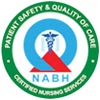
Nuclear Medicine In Oncology
December 15, 2023
Nuclear medicine therapy, also known as molecular radiotherapy or peptide receptor radionuclide therapy (PRRT), is an innovative approach for treating certain types of cancer. This targeted treatment can be used alone or combined with other therapies like chemotherapy, surgery, hormone therapy or radiation therapy.
How Does Nuclear Medicine Therapy Work?
Nuclear medicine utilizes radioactive materials called radiopharmaceuticals that release radiation to kill cancer cells. The radiopharmaceuticals used contain a radioactive isotope attached to a peptide or molecule that recognizes and binds to receptors on tumor cells.
When injected into the patient’s bloodstream, the radiopharmaceutical circulates through the body and accumulates in the cancer sites. The radiation it gives off destroys the cancer cells it is attached to while leaving healthy cells unharmed.
The most common radiopharmaceuticals used are:
- Lutetium-177 DOTATATE (Lutathera) for neuroendocrine tumors
- Iodine-131 MIBG for neuroblastoma or pheochromocytoma
- Radium-223 (Xofigo) for prostate cancer that has spread to the bone
What are the Benefits of This Treatment?
Compared to traditional chemotherapy and radiation therapy, nuclear medicine has several advantages:
- Targeted: Only cancer cells are targeted, reducing damage to healthy tissue. Radiation is delivered directly inside cancer cells.
- Effective: High doses of radiation can be given to kill tumors without increasing side effects. It is effective for treating cancers that no longer respond to other therapies.
- Repeated dosing: Treatment sessions can be repeated multiple times for maximum anti-cancer activity.
- Outpatient therapy: Patients do not require hospital admission and treatment is provided in an outpatient setting.
- Improved quality of life: Optimal symptom relief with minimal side effects allows patients to maintain daily activities.
What to Expect During Treatment
Patients receive nuclear medicine therapy in a specialized room with trained medical staff to ensure safety. Each treatment session may last up to 8 hours.
To help protect the kidneys from radiation, patients are given intravenous amino acids before and after the therapy dose. The radiopharmaceutical is injected through an IV line and allowed to circulate for 30-40 minutes.
Imaging tests like SPECT or PET scans may be performed during treatment to monitor distribution of the drug. Patients can usually go home shortly after completion of the infusion. Multiple treatment cycles are scheduled over weeks or months.
Side Effects of Nuclear Medicine Therapy
Nuclear medicine therapy is well tolerated but some possible side effects include:
- Nausea, vomiting, diarrhea
- Decreased blood cell counts
- Loss of taste or decreased appetite
- Fatigue
- Hair loss
- Blood disorders
Side effects are generally mild and reversible. Doctors work to optimize doses and timing of therapy sessions to maximize efficacy while minimizing risks. Supportive care is provided to manage any side effects if they occur.
With its unique benefits and generally favorable safety profile, nuclear medicine therapy is an important weapon for fighting cancer and improving patient outcomes.
Recent Blogs
- Factors Contributing to Infertility
- Advantages of Robotic Surgery
- What is Robotic Surgery? Conditions Where Robotic Surgery Can Be Used
- Robotic Surgical Systems
- Types of Robotic Surgeries
- Causes of Male and Female Infertility
- What Is Male Infertility? Treatments For Male Infertility
- Superfoods That Can Boost Your Chances of IVF Success
- 5 Myths Over IVF
- What Are The Do’s And Don’ts For The Embryo Transfer Process?
- What are the different Cardiology Subspecialties?
- What is the difference between Invasive, Non Invasive and Interventional Cardiology?
- What is the difference between Cardiologist and Cardiothoracic Surgeon?
- What Are the Different Types of Heart Surgery and Their Purposes?
- Types of nuclear cardiology tests
2023
- December (6)
- November (8)
- Cardiac Catheterization: When Is It Required?
- Types Of Pediatric Cardiology Test
- Tips For Preventing Heart Problems In Kids
- Advances In The Diagnosis Of Congenital Heart Disease In Children
- Signs Of Heart Problems In Children
- What Is A Pediatric Cardiologist?
- Understanding Congenital Heart Defects In Children
- Pediatric Cardiac Surgery: Types And Considerations
- September (7)
- Lifestyle Changes To Prevent Diabetes
- New Innovative Advances In Diabetes Treatment
- The Link Between Obesity And Diabetes
- Monitoring Blood Sugar At Home
- The Importance Of Regular Diabetes Check-ups
- Understanding Diabetes: Types, Causes, Symptoms & Treatment
- Lower Blood Sugar Naturally: Managing Blood Sugar Through Diet
- August (8)
- What’s The Difference Between A Neurologist And Neurosurgeon?
- Dementia: Causes, Symptoms, Diagnosis And Treatment
- Seizures: Causes, Symptoms, Diagnosis And Treatment
- Epilepsy: Causes, Symptoms, Diagnosis And Treatment
- Is Autism A Neurological Disorder? Causes, Symptoms & Diagnosis
- Pediatric Neurology: Neurological Disorders In Pediatrics
- What Are The Most Common Neurological Disorders?
- Types Of Neurosurgery: Overview, Procedure & Costs
- July (11)
- Types of Cardiac Stents
- Types of nuclear cardiology tests
- What Are the Different Types of Heart Surgery and Their Purposes?
- What is the difference between Cardiologist and Cardiothoracic Surgeon?
- What is the difference between Invasive, Non Invasive and Interventional Cardiology?
- What are the different Cardiology Subspecialties?
- What Are The Do’s And Don’ts For The Embryo Transfer Process?
- 5 Myths Over IVF
- Superfoods That Can Boost Your Chances of IVF Success
- What Is Male Infertility? Treatments For Male Infertility
- Causes of Male and Female Infertility
- April (4)
- March (1)
-

Share with us
Click Here -

Organ Transplantation
Click Here
Copyrights © 2025 PSG Hospitals. All Rights Reserved.








